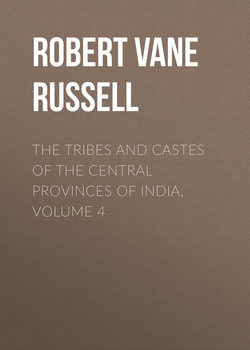Читать книгу The Tribes and Castes of the Central Provinces of India, Volume 4 - Robert Vane Russell - Страница 59
Part II
Articles on Castes and Tribes
Kumhār—Yemkala
Vol. IV
Kurmi
20. Disposal of the dead
ОглавлениеThe dead are usually burnt with the head to the north. Children whose ears have not been bored and adults who die of smallpox or leprosy are buried, and members of poor families who cannot afford firewood. If a person has died by hanging or drowning or from the bite of a snake, his body is burnt without any rites, but in order that his soul may be saved, the hom sacrifice is performed subsequently to the cremation. Those who live near the Nerbudda and Mahānadi sometimes throw the bodies of the dead into these rivers and think that this will make them go to heaven. The following account of a funeral ceremony among the middle and higher castes in Saugor is mainly furnished by Major W. D. Sutherland, I.M.S., with some additions from Mandla, and from material furnished by the Rev. E. M. Gordon:66 “When a man is near his end, gifts to Brāhmans are made by him, or by his son on his behalf. These, if he is a rich man, consist of five cows with their calves, marked on the forehead and hoofs with turmeric, and with garlands of flowers round their necks. Ordinary people give the price of one calf, which is fictitiously taken at Rs. 3–4, Rs. 1–4, ten annas or five annas according to their means. By holding on to the tail of this calf the dead man will be able to swim across the dreadful river Vaitarni, the Hindu Styx. This calf is called Bachra Sānkal or ‘the chain-calf,’ as it furnishes a chain across the river, and it may be given three times, once before the death and twice afterwards. When near his end the dying man is taken down from his cot and laid on a woollen blanket spread on the ground, perhaps with the idea that he should at death be in contact with the earth and not suspended in mid-air as a man on a cot is held to be. In his mouth are placed a piece of gold, some leaves of the tulsi or basil plant, or Ganges water, or rice cooked in Jagannāth’s temple. The dying man keeps on repeating ‘Rām, Rām, Sitārām.’”
66
In Indian Folk Tales.
